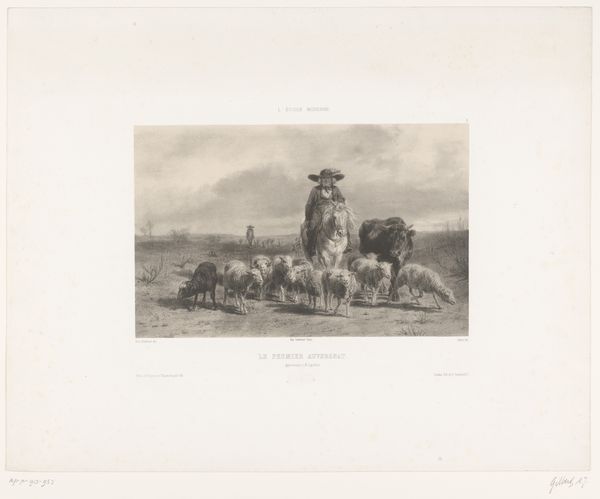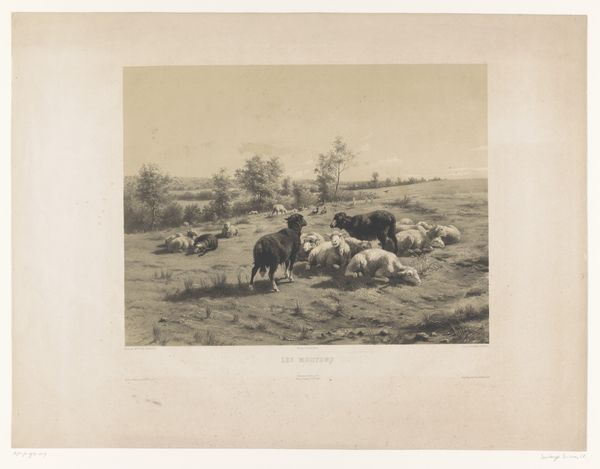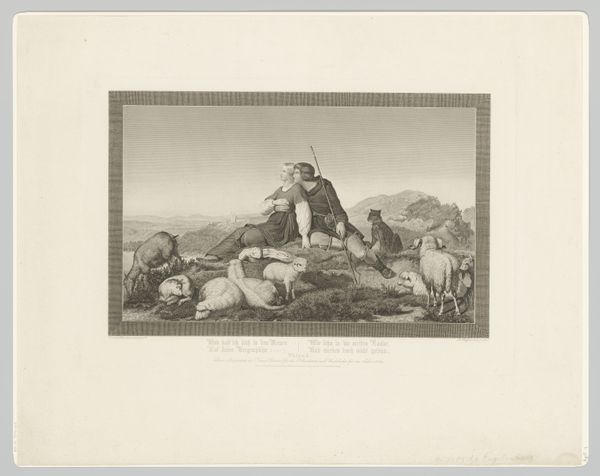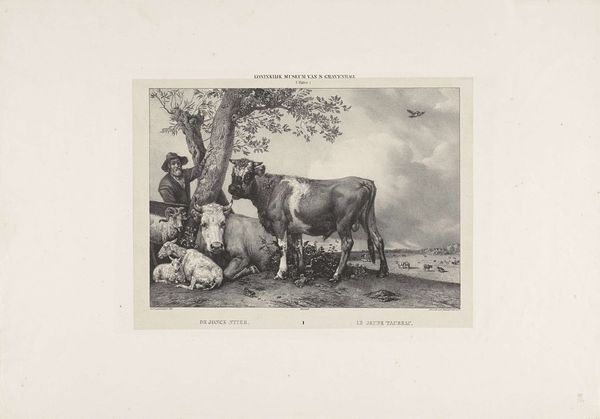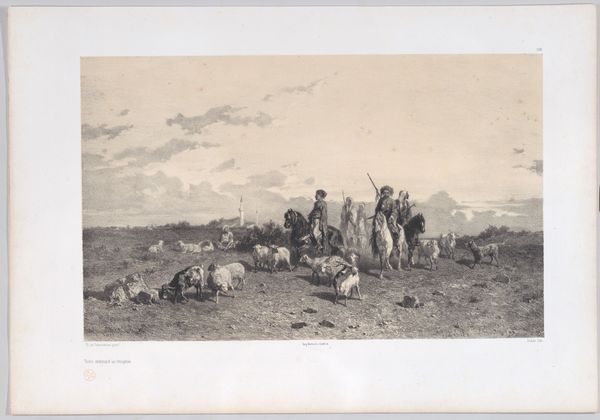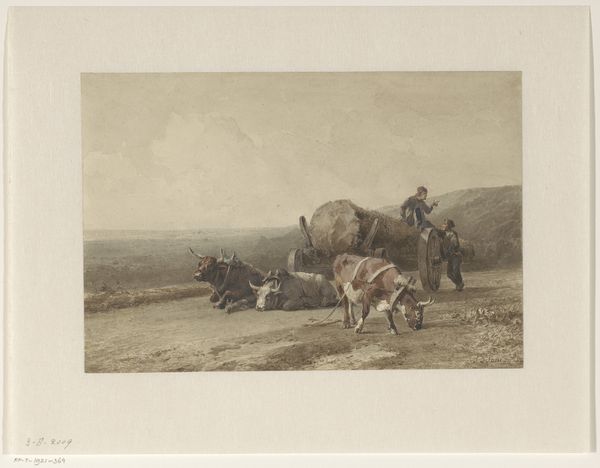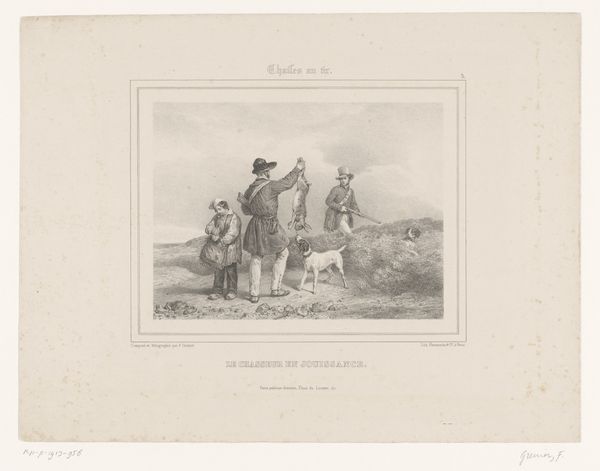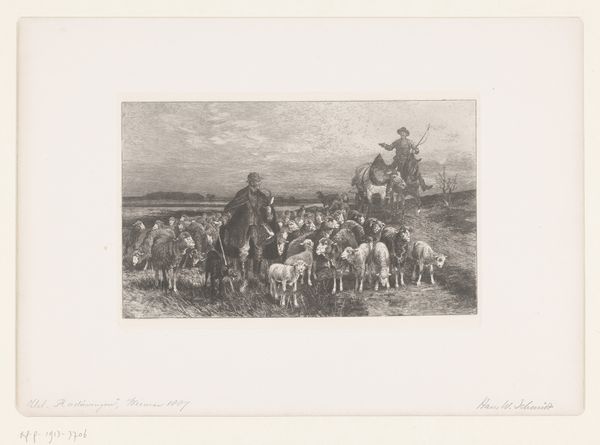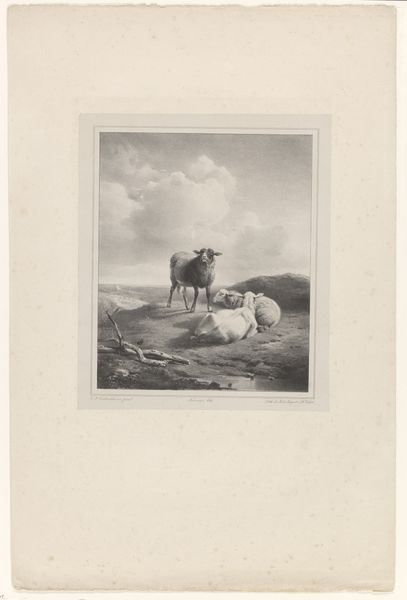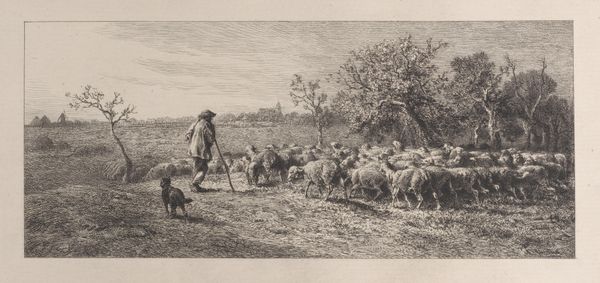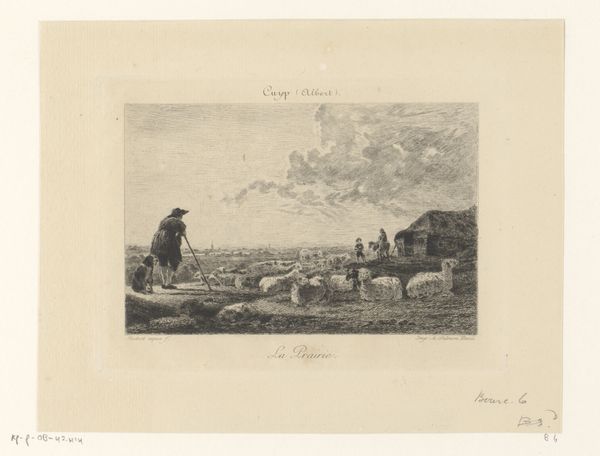
Boer en herder met koeien en schapen op weg naar de markt 1854 - 1870
0:00
0:00
lithograph, print
#
natural tone
#
lithograph
# print
#
landscape
#
genre-painting
#
realism
Dimensions: height 506 mm, width 623 mm
Copyright: Rijks Museum: Open Domain
Curator: This lithograph, entitled "Boer en herder met koeien en schapen op weg naar de markt"—which translates to "Farmer and Shepherd with Cows and Sheep on the Way to Market"—was created sometime between 1854 and 1870 by Louis Emmanuel Soulange-Teissier. What are your initial thoughts? Editor: It's striking how muted the tones are. There's a softness to the entire scene, almost like looking at a faded memory. I feel this stillness with this landscape, the animals poised to move but also caught in a quiet moment. Curator: This print embodies realism, capturing a genre painting scene with a seemingly mundane activity. What interests me is how such seemingly 'ordinary' representations were chosen as subjects. This print could speak to the socio-political values invested in the working class at this time. Editor: I agree, but that tranquility feels… almost misleading. If we situate this image within the rise of industrialization and its effect on rural communities, it becomes more complicated. Are we meant to see this journey to market as a celebration of labor or a representation of marginalization? How are we meant to reconcile the figures blurred on the horizon to those centrally depicted with sharp resolution? Curator: Right. The act of depicting laborers does not automatically translate into an elevation of their social standing. Were these idealized depictions? Were these meant for consumption and enjoyment by particular members of the wealthy class, as a testament to their economic power? The seemingly humble subject matter needs further interrogation through the lens of class dynamics. Editor: I'd add gender to the conversation as well. Note who rides horseback—those at the apex of rural patriarchal structure—and whose labour, both animal and human, literally paves the way for them. Curator: Exactly, who holds the power? Whose labor sustains the status quo? These subtle arrangements, these depictions, speak volumes if we position them within larger societal structures of power and inequality. This work reminds us how social structures, in art and life, continue to inform one another, echoing from the past into the present. Editor: And hopefully it will incite reflection for the future too.
Comments
No comments
Be the first to comment and join the conversation on the ultimate creative platform.
